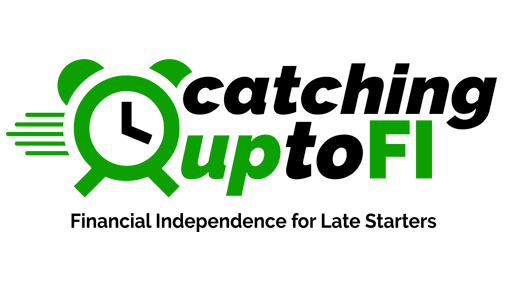At A Glance – An IRA is an investment account that allows you to save money tax-deferred for retirement. Depending on which type you choose, your contributions may be tax deductible or your withdrawals may be tax-free.
***Disclaimer!
This article will only cover the basics of IRAs. There are hundreds of nuances depending on your personal situation. Please consult your investment, tax, or legal professional.
What Is An IRA?
An IRA or Individual Retirement Arrangement (yes, I know, everyone says account, but it’s actually arrangement) is an investment account that allows you to save money tax-deferred for retirement. Depending on which type you choose, your contributions may be tax deductible or your withdrawals may be tax-free.
You can open an IRA at a bank, an insurance company, or a brokerage firm.
Types Of IRAs
There are several kinds of IRAs, includingTraditional IRAs. Roth IRAs, Rollover IRAs, Simplified Employee Pensions (SEP) IRAs, and Savings Incentive Match Plan for Employees (SIMPLE) IRAs. Each has different rules regarding eligibility, taxation, and withdrawals.
Traditional IRA
Usually, contributions to a Traditional IRA are tax-deductible. For example, if you put $5,000 into a Traditional IRA, your taxable income will be reduced by that same $5,000. The earnings in your IRA grow tax-deferred until you withdraw them in retirement. Any withdrawals are taxed as ordinary income.
Roth IRA
Contributions to a Roth IRA are made with money that has already been taxed or after-tax money. The earnings in a Roth grow tax-free and any withdrawals are also tax-free.
Rollover IRA
You contribute money “rolled over” from a qualified retirement plan into this IRA. Rollovers involve moving eligible assets from an employer-sponsored plan, such as a 401(k) or 403(b), into an IRA.
Simplified Employee Pensions or SEP IRA
A SEP IRA is a Traditional IRA for small business owners or self-employed individuals. Contributions are made by the employer directly to an IRA set up for each employee. SEP IRAs have higher annual contribution limits than traditional IRAs. Similar to a Traditional IRA, contributions are tax-deductible. Investments grow tax-deferred until retirement when distributions are taxed as income.
Savings Incentive Match Plan for Employees or SIMPLE IRAs
SIMPLE IRAs are similar to SEP IRAs because they are both set up for use by small businesses. They both have a larger annual contribution limit than Traditional IRAs and they both grow tax-deferred. The main difference is a SIMPLE IRA allows both the employee and the small business owner or sole proprietor to make contributions. A SEP IRA, meanwhile, only allows business owners to make contributions for both themselves and their employees.
Who Can Open One?
Anyone who has earned income can open an IRA. However, there is an exception for married spouses who file their taxes jointly. It’s known as a Spousal IRA. It is a Traditional or Roth IRA in the non-working spouse’s name into which both partners can make contributions.
How Do You Open an IRA and How Do You Contribute To It?
You can set up an IRA at a bank, an insurance company, or a brokerage firm. I personally have mine with Vanguard.
The steps will vary by provider, but opening an IRA is pretty easy. Go to the provider’s website, choose the type you want to open (Traditional or Roth), and fill in some personal data such as your Social Security number, date of birth, contact information, and employment information.
Once you’ve opened the account, you’ll see your options for how to fund it. You can fund it by transferring funds from a bank account or transferring assets from an existing IRA at another financial institution.
Ongoing contributions can be made by manually doing the transfer online or by setting up an automatic transfer.
The IRS does not require a minimum amount to open an IRA, but the financial institution may have a minimum dollar requirement.
How Much Can You Contribute?
Traditional and Roth IRAs have a combined annual contribution limit of $6,500 in 2023 ($7,500 if age 50 and older). The amount you contribute may be done all at once or over time during the year. A common strategy, known as dollar-cost averaging, is to make contributions at regular intervals. For example, perhaps you stash away $100 or even $500 per month in your IRA. If you choose to contribute monthly, set up the contributions on automatic. That way you don’t have to think about it and are not tempted to spend the money elsewhere.
Limitations to Contributions
The ability to take the tax deduction or contribute up to the max can be limited depending on your income.
For a Traditional IRA, if you (or your spouse if you’re married) contribute to a retirement plan at work, there are income limits that might restrict your ability to deduct your IRA contribution from your federal income tax. If you are single and your modified adjusted gross income or MAGI is $73,000 or less, or married filing joint and your MAGI is $116,000 or less, the tax deduction on your contribution will not be reduced. If you are over these limits you tax deduction will be reduced or eliminated. Check out the IRS website for limits to your tax deductions.
The ability to contribute to a Roth IRA is subject to income limits. If you are single and your MAGI is less than $138,000, or married filing joint and your MAGI is $218,000 or less, your contribution is not limited. If you are over these limits you contribution amount is reduced or eliminated. Check out the IRS website for contribution limits.
How Does Your Money Grow?
One common mistake made with IRAs (and 401ks) is that many people think all they need to do is make their regular contribution of funds. An IRA is only a bucket or a wrapper that holds your money. Your money is not invested until you tell that money where to go. You have a wide range of choices for investing your money once it is in the IRA. It can be invested in stocks, bonds, mutual funds, ETFs, or index funds. A portion of your money can also be held in cash. The choice is yours, but be sure you make that choice!
If you don’t know how to invest your IRA funds, check out my article How To Start Investing – A Beginners Guide.
Advantages of An IRA
No matter which type you have, they are a good way to help you build wealth and save for retirement. They are easy to set up and make regular contributions. They give you tax advantages, whether it’s tax deductions today or tax-free growth for the future. There is a wide range of investments to choose from to help your money grow.
When Can You Withdraw Your Money?
Withdrawals from an IRA are penalty free after you turn 59 1/2. However, if funds are withdrawn before the age of 59 1/2, you are subject to a 10% penalty and the amount is included in your income for taxes. There are some exceptions to this rule, such as being a first-time homebuyer or paying for your medical insurance premium after a job loss.
Any withdrawals from a Traditional IRA are subject to your marginal federal tax rate and possibly state income tax.
In the case of a Roth, you are allowed to withdraw your contributions at any time because those funds have already been taxed. If you are over 59 1/2 and you have held your account for at least 5 years, your contributions and earnings can be withdrawn with no tax or penalty.
Required Minimum Distributions or RMDs
Traditional IRAs are subject to Required Minimum Distributions or RMDs. This means after you reach a certain age (currently 73 and scheduled to increase to 75), you are required to start withdrawing your money. Basically, the IRS wants to start getting their money since traditional IRAs are tax-deferred.
These RMDs are determined by a calculation in the IRS code based on your age and current life expectancy. There are many calculators online to help you determine your RMD. RMDs can be done manually or can be set up happen automatically by your financial institution. I prefer to do mine manually, but be sure you set a reminder so it is not forgotten.
Set up Beneficiaries For All Your IRAs
It is very important that you set up beneficiaries on every bank account and brokerage account you own. IRAs are included in this. Be sure to set up beneficiaries on each IRA account you own. This will make life easier for those you leave behind. And be sure to confirm or update your beneficiaries once a year.
Key Takeaway – An IRA allows you to build wealth and save for retirement in a tax-advantaged way. You can choose to defer the taxes on your contributions and growth or you can pay the tax now on your contributions and let them grow tax-free.
Assignment – If you or your spouse has earned income, research what kind of IRA is right for you. Open one and set up automatic contributions. If you already have an IRA, are you maxing out your contributions? If not, look at your budget to see if that is possible.









